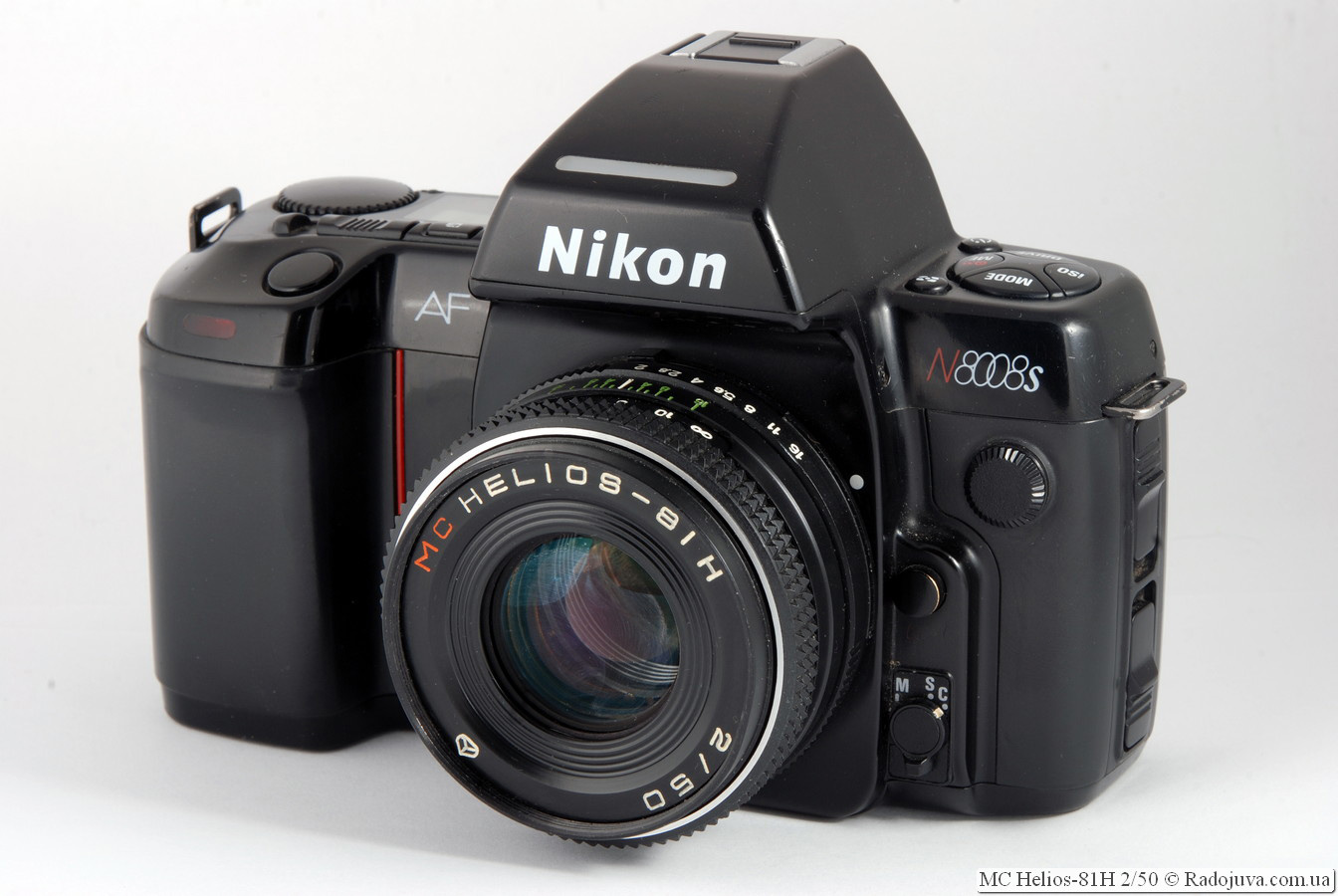
MC Helios-81H 2/50 lens on the camera Nikon AF N8008s. Enlarge Image.
In short
MC Helios-81H 2/50 (or MC Helios-81H 2/50, or Arsat H 50mm 1: 2) - is one of the best standard lenses of Helios family... This lens is most often called a 'fifty-kopeck piece' because of the focal length of 50mm. On full-frame cameras (film and digital cameras with a frame size of 36 x 24 mm) it is standard (in terms of focal lengths and angle of view) and is suitable for everyday use for a wide range of tasks. Helios-81 can also be used as a portrait and creative lens on modern cropped cameras.
In my opinion, Helios-81 earned its popularity due to its compatibility with Nikon digital SLR cameras with Nikon F mount. The bulk of the lenses of the Helios-81 family do not require any adapters and work similarly to the original manual Nikon Nikkor AI / PRE-AI lenses. ...
Also, the popularity of the lens is associated with a special twist of the background, inherent in many lenses of the Helios family, as well as good optical capabilities at a fairly low cost. On average, Helios-81N can be found for $ 30.
Critical: there are many different variants of the lenses of the Helios-81 H / M / AUTOMAT family. If the latest versions are indeed some of the best stock lenses from Helios family, then early versions are the worst... Early versions are easily distinguished by their wide focusing ring and serial number near the front lens. These options have many mechanical problems. Later and better versions have a serial number in small print on the side of the aperture control ring. Here is such a paradox - from the best to the worst is just a step. I strongly advise against messing with these early versions (shown, for example, in the 'Appearance # 3' section). And also by no means do not purchase lenses marked 'AUTOMATIC'... Lenses series Helios-81N AUTOMATIC have a different mount, for which there are no adapters for any cameras (the appearance of lenses HELIOS-81 2/50/53 AUTOMATIC shown here). If something is not very clear, or if you want to be 100% sure that the future purchased lens will please you - ask here in the comments, or contact me according to my personal contacts.
It is difficult to overestimate the creative potential of such fifty dollars. Photo enthusiasts often use it as a portrait lens. Many people just want a fast prime, especially in addition to their stock / kit lens. Aperture F / 2 approx. three steps wider aperture of f / 5.6, which is used in 'dark' kit lenses at the long end. In numerical terms, this means that Helios-81 is approximately 8 times brighterthan, for example, whale Nikon DX VR AF-P Nikkor 18-55mm 1: 3.5-5.6Gwhich use a maximum relative aperture of only 50: 1 over a 5.6 mm focal length. The calculation of the difference in the relative aperture (count the aperture) is performed elementarily: (5.6 * 5.6) / (2 * 2) = 7.84, which is rounded to the value '8'.
History
Helios-81 is a descendant of the Helios-65 (HELIOS 65 AUTOMATIC 2/50), which, in turn, is a shortened descendant of the lenses family Helios-44.
The Helios-81 lens family includes many models and their modifications. In general, the development of the line proceeded as follows: Helios-81 AUTOMAT -> Helios-81 M or N -> MC Helios-81 M or N -> MC Helios-81 N -> Arsat H. Each of the modifications has several subversions.
For practical use, the latest versions of MC Helios-81 H (aka 'MC HELIOS 81 H') and Arsat are best suited for which the serial number is indicated in small print on the lens barrel, and not near the front lens.
Appearance # 1
Lens shown below MS HELIOS-81H 2/50 with serial number 9227112, presumably produced in 1992. The front and rear lenses of the objective have cyan, blue, lilac, violet and red anti-reflective shades.
Appearance # 2
Lens shown below MC HELIOS-81H 2/50 with serial number 9315003, presumably produced in 1993. The front lens of the objective has green, purple and red shades of enlightenment.
Appearance # 3
Lens shown below MS HELIOS-81M 2/53 with serial number 8204223, presumably produced in 1982. Filter diameter 49 mm. The front lens of the objective has blue, lilac, violet, red and yellow anti-reflective shades. The petals of the diaphragm are shiny, yellowish-orange (copper-colored). The focus ring rotates 315 degrees (7/8 of a full turn). Three intermediate clicks between F / 2 and F / 2.8 and two intermediate clicks between the other pairs of f-numbers (rare). Does not sit on without alteration Nikon D70, D70s, D80, D90... Nikon is installed on the rest of the CZK without problems. No protrusion for the diaphragm rheostat, with a long 'skirt' of the diaphragm control ring (but the skirt does not rest against the diaphragm rheostat). Nikon F mount, letter 'M' stands for 'M' blinking aperture.
Appearance # 4
Lens shown below ARSAT H 50mm 1: 2 with serial number 9417121, presumably produced in 1994. The front lens of the objective has green, purple and blue shades of enlightenment.
Appearance # 5
Lens shown below HELIOS-81N 2/53 with serial number 8309805, presumably produced in 1983. Filter diameter 49 mm. The front lens of the objective has bluish and ash shades of enlightenment. The diaphragm blades are shiny, silvery. The focus ring rotates 315 degrees (7/8 of a full turn). Three intermediate clicks between F / 2 and F / 2.8 and two intermediate clicks between the other pairs of f-numbers (rare). Does not sit on without alteration Nikon D70, D70s, D80, D90... Nikon is installed on the rest of the CZK without problems. No protrusion for the diaphragm rheostat, with a long 'skirt' of the diaphragm control ring (but the skirt does not rest against the diaphragm rheostat). Nikon F. mount.
Main technical specifications MC Helios-81H 2/50
| The name of the instance from the review (as it is written on the lens itself) | MC Helios-81H 2/50 with the logo of the Arsenal factory (there are a lot of other ways to write the name of the lens) |
| Basic properties |
|
| Front Filter Diameter | 52 mm (there are options for 49 mm) |
| Focal length | 50 mm (according to some sources - 52 or 53 mm), EGF for cameras with an APS-C type sensor is approximately 75 mm |
| Zoom ratio | 1 x |
| Designed by | for film cameras with a frame size of 36 mm X 24 mm |
| Number of aperture blades | 6 petals. Petals form a hexagon of approximately the correct shape. Petals are dull metal, not blackened. |
| Tags |
|
| Diaphragm | From F / 2 to F / 16.0, it is regulated by the aperture ring, there is no diaphragm operation method switch on the lens. The ring has one intermediate fixed value between the indicated pairs of numbers (between F / 11 and F / 16 there is no intermediate value). |
| MDF (minimum focusing distance) | 0.5 m, maximum magnification ratio is 1: 7 (approximately) |
| The weight | 214 grams measured without caps (lens itself only) |
| Optical design | 6 elements in 4 groups, ('Planar' type scheme) |
| Lens hood | screwed into the front filter, the original lens hood markings were not found. Any analogs are suitable, according to type of such |
| Manufacturer country | USSR, Arsenal plant (later the lens was produced under the 'Arsat' brand in Ukraine). |
| Period | Several years, the exact period of production is unknown. |
Lens modifications
Please note that there are many modifications of the lens and many spellings of its name. The main ones are:
'AUTOMATIC' versions
- Helios-81 2/50 Automatic - you can see an overview of this modification here
- Helios-81 2/53 Automatic - you can see an overview of this modification here
- Helios 81 2/50 Automatic (no dash between 'Helios' and '81')
Versions 'М 2/53'
- Helios-81М 2/53 with H-mount, metal silvery unblacked petals, you can see an overview of this modification here
- Helios-81М 2/53 H-mount, copper colored metal petals not blackened
- MS Helios-81M 2 /53 H-mount, copper-colored, unblacked metal petals (appearance # 3 from this review)
Versions 'H'
- MS Helios-81H 2/50 (with serial number near the front lens, long skirt of the aperture control ring, wide focusing ring)
- MS Helios-81N 2/50 (serial number from the bayonet side, short skirt of the diaphragm control ring, lilac enlightenment, one of the most common and classic options)
- MS Helios-81N 2/50 (serial number from the bayonet side, short skirt of the diaphragm control ring, green enlightenment, one of the most common and classic options)
- MS Helios-81N 2 /53 (appearance # 5 from this review)
- Helios-81Н 2/53 (analogue of Helios-81M 2/53)
- ARSAT H 1: 2 50mm - an almost complete copy of MC Helios-81N 2/50, the differences are described here
- MC Helios-81h 2/50 - full copy of MS Helios-81H 2/50, export version, this version looks like like this.
- MC Helios-81 2/50 - full copy of MC Helios-81N 2/50, export version
Other versions
- Helios-81 2/50
- Helios-81 2/52 (diaphragm ring on the front of the lens)
- Helios-81 (GK-81)
- GOI << HELIOS-81 >> 2 / 52,4 (silver metal case)
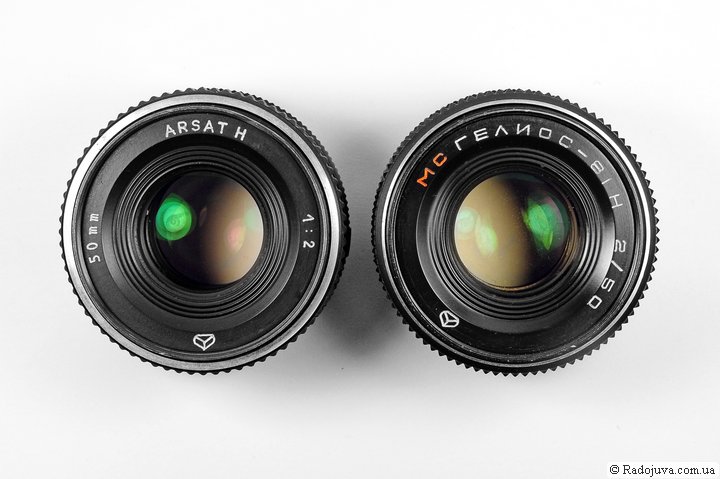
Just different names: ARSAT 1: 2 50mm МС ГЕЛИОС-81Н 2/50
Optically, they are the same lens. The difference between lenses with different names lies in different mounting threads or mounts, body rims, enlightenment and age. Many new lenses MS Helios-81Nreleased in Ukraine (after the collapse of the Union) are called Arsat. This review discusses one of the most popular lenses, namely MS Helios-81H 2/50.
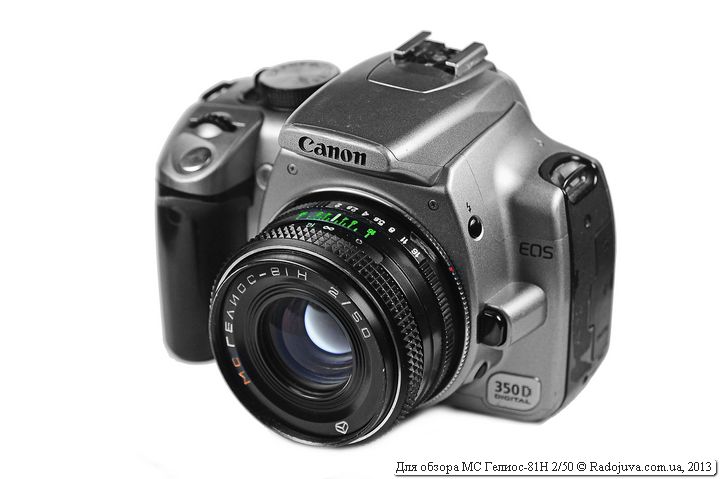
View of the Helios-81N MS lens on a Canon EOS camera 350D Digital The lens is mounted using a cheap adapter Nikon mount F - Canon EOS.
As usual, the first thing you feel and pay attention when using the old lens is its weight, the lens is small, very short, it resembles a pancake. The weight of this “pancake” is quite large. The build quality is usual - a lot of metal and glass. The lens has no backlash.
Interesting: 81-H is read not as 81-'ash ', but as 81-'en'. Easy to remember 81-Nikon, as 'H' mount is Nikon F mount (Nikon F mount)
MS Helios 81-N produced at the Arsenal plants in Kiev or Uman in Ukraine. The lens used special lanthanum glasses - super-heavy crowns with high resolution, this allows you to partially get rid of chromatic aberrations.
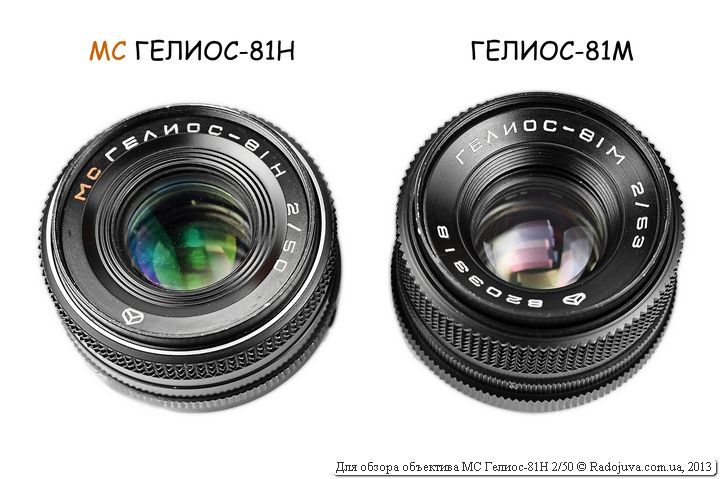
So there are two versions of the Helios 81 lens
How to use with modern cameras
Nikon F-mount DSLRs
To use the Nikon MS Helios-81H 2/50 lens on Nikon DSLR cameras just install the lens without any adapters and shoot for your own pleasure without any tangible limitations. Possibility focusing on infinity, as well as semi-automatic iris control... This is due to the fact that MC Helios-81H 2/50 uses the same bayonet mount (mount type) as the native Nikon lenses. All lenses from cameras Kiev-17, Kiev-17m, Kiev-18, Kiev-19 and Kiev-19m, Kiev-20 use the Nikon F mount, the same as that of modern Nikon DSLRs. Some cameras will even have automatic metering exposure. Exact list of cameras that support metering exposure with manual lenses (such as this one) you can see here or here. For more information on how to use manual lenses, see my article. Soviet optics.
Important: although the lenses MC Helios-81N 2/50 have a protrusion for transmitting the aperture value to the camera through the aperture rheostat (copy AI Nikkor Lenses), while the diaphragm skirt may be too long (like PRE-AI Nikkor Lenses) because some Lenses Helios-81 2/50 without additional modification cannot be installed on modern Nikon DSLR cameras. Some can only be installed on a specific list of cameras. To treat such a disease can be very simple - just cut off part of the diaphragm control ring, as shown in the figure by Sergei Elizarov here.
It's important: if you come across a lens that does not sit on your camera and you don’t want to cut it, you can still easily use the lens on any Nikon DSLR with macro rings... MC Helios-81N 2/50 can be easily installed on any Nikon F cameras via Any extension tube for Nikon F-mount cameras... However, this loses the ability to focus to infinity and medium focusing distances.
Important: to immediately find a variant of MC Helios-81H 2/50, which can work on any Nikon F-mount SLR camera, you need to look for lens options with the name MC Helios-81H 2/50 (or MC HELIOS-81H 2/50) and without a serial numbers near the front lens, as well as any lens variants with the modern name ARSAT.
Important: if something is not clear, or there is a desire to clarify - write in the comments under this review, I and other readers will try to suggest.
Nikon 1 mirrorless cameras
To use the lens on a series of mirrorless cameras Nikon 1 (Nikon 1S1, Nikon 1S2, Nikon 1 V1, Nikon 1 V2, Nikon 1 V3, Nikon 1 J1, Nikon 1 J2, Nikon 1 J3, Nikon 1 J4, Nikon 1 J5, Nikon 1 AW1) use the adapter Nikon F - Nikon 1. The cheapest adapters can be found aliexpress.com. For example, such an adapter can be easily purchased. here.
Important: there are no problems with any versions of Helios-81 for Nikon F mount (Nikon 'N') and any corresponding adapters.
Nikon Z mirrorless cameras
To use the lens on a series of mirrorless cameras Nikon Z use an original Nikon FTZ adapter.
You can use any inexpensive Chinese analogue, for example, such an adapter Nikon AI -> Nikon Z.
Important: there are no problems with any versions of Helios-81 for Nikon F mount (Nikon 'N') and any corresponding adapters.
Canon (EF, M, RF)
In order to install MC Helios-81N 2/50 on any modern digital SLR camera Canon EOS, you will need to use the adapter Nikon mount F - Canon EOS. Possibility focusing on infinity saved. The cheapest adapters can be found aliexpress.com. For example, adapter Nikon mount F - Canon EOS EF (aka Nikon AF-> Canon EF) easy to buy here.
It's important: all lenses of the Helios-81H family (with 'H' / 'Nikon F' mount), regardless of the year of manufacture and the features of the mount, can be installed on any camera without any problems Canon EOS using the specified adapter Nikon mount F - Canon EOS EF (aka Nikon AI-> Canon EF).
To use the lens on mirrorless cameras series Canon EOS M use adapter Nikon F - Canon EOS M (aka Nikon AI-Canon M). The cheapest adapters can be found aliexpress.com. For example, such an adapter can be easily purchased. here.
To use the lens on mirrorless cameras Canon EOS R series, use an adapter Nikon F - Canon EOS R (aka Nikon AI-> Canon RF). The cheapest adapters can be found aliexpress.com. For example, such an adapter can be easily purchased. here.
Sony (A, E)
Using the lens with SLR cameras Sony (DSLRs as well as SLT cameras with a translucent mirror) is difficult. For use, an adapter with a corrective lens should be used, which may negatively affect the image quality. If you still want to use MC Helios-81N 2/50 on cameras Sony / Minolta with A-mount, use the adapter Nikon F - Sony A. The cheapest adapters can be found aliexpress.com. For example, such an adapter can be easily purchased. here.
To use the lens on mirrorless cameras Sony NEX, Sony ILCE, Sony ALPHA with Sony E mount or Sony FEjust use an inexpensive adapter Nikon F - Sony E. The cheapest adapters can be found aliexpress.com. For example, such an adapter can be easily purchased. here... Also available for these cameras autofocus adapter Techart PRO Leica M - Sony E Autofocus Adapterwhich can be found at this link.
FUJIFILM (X, GFX)
X-mount mirrorless cameras require an adapter Nikon F -> Fuji X (aka AI-> X). The cheapest adapters can be found aliexpress.com. For example, such an adapter can be easily purchased. here.
For mirrorless medium format cameras with mount GFX need adapter Nikon F -> Fuji GFX (aka AI-> GFX). The cheapest adapters can be found aliexpress.com. For example, such an adapter can be easily purchased. here.
SIGMA / PANASONIC / LEICA (L, M)
An adapter is required for mirrorless cameras with Leica L mount (T, TL, SL) Nikon F -> Leica L (aka AI-> L). The cheapest adapters can be found aliexpress.com. For example, such an adapter can be easily purchased. here. For cameras with a Leica M mount need adapter Nikon F -> Leica M (aka AI-> M).
PENTAX
Using a lens with Pentax SLR cameras is difficult. For use, an adapter with a correction lens should be used, which can adversely affect image quality. If you still want to use Helios-81H 2/50 MC on Pentax cameras with K mount (and its modifications), then you should use the adapter Nikon F - Pentax K. The cheapest adapters can be found aliexpress.com. For example, such an adapter can be easily purchased. here... The same goes for a mirrorless camera. Pentax K-01.
To use the lens on Pentax mirrorless cameras with Pentax Q mount (Pentax Q, Pentax Q10, Pentax Q7, Pentax Q-s1)just use an inexpensive adapter Nikon F - Pentax Q. The cheapest adapters can be found aliexpress.com. For example, such an adapter can be easily purchased. here.
Samsung (NX)
NX mount mirrorless cameras require an adapter Nikon F -> Samsung NX (aka AI-> NX). The cheapest adapters can be found aliexpress.com. For example, such an adapter can be easily purchased. here. For the camera Nx mini adapters do not exist yet.
OLYMPUS / PANASONIC / KODAK / XIAOMI (mirrorless, MICRO 4/3)
To use the lens on mirrorless cameras OLYMPUS/PANASONIC/KODAK/ XIAOMI (and some others) with a Micro 4/3 mount, it is enough to use an inexpensive adapter Nikon F - MICRO 4/3. The cheapest adapters can be found aliexpress.com. For example, such an adapter can be easily purchased. here.
OLYMPUS / PANASONIC / LEICA (mirrors, 4/3)
For SLR cameras with a 4/3 mount (not to be confused with Micro 4/3!) An adapter is required Nikon F-> 4/3. The cheapest adapters can be found aliexpress.com. For example, such an adapter can be easily purchased. here.
Attention! Lenses of the HELIOS AUTOMAT series
Very important: the lenses Helios-81 2/50 AUTOMATIC и Helios-81 2/53 AUTOMATIC cannot be used with modern cameras. Simply there are no corresponding adapters. Attackers often give out Helios-81 2/50 Automatic (a review of this modification you can see here) и Helios-81 2/53 Automatic (a review of this modification you can see here) for the lens MC Helios-81N 2/50. Be attentive!
Sample photos on Nikon DX (APS-C, crop 1.5X)
Below are my photos for different modifications of the Helios-81 / Arsat H lens:
Jpeg source photos watch and / or download here (200+ photos on Nikon D40).
Sample photos on MC Helios-81H and Nikon FX (full frame, Full Frame)
All photos were taken on a Helios-81N MC and a full-frame camera Nikon D700 FX no processing. Reduced size to 1920 * 1080 pixels and imprinted data from EXIF.
UPDATED
Photographer shared examples of photos on MC Helios-81N 2/50 with readers of Radozhiva Lilia Nemykina:
My experience
I like Helios-81N, with it you can feel the spirit of Soviet lenses, get nice shots and feel like a real manual technician (a photographer who uses manual lenses).
Unfortunately, I must state the fact that in general this fifty kopeck piece loses in many respects to any autofocus similar lens. Helios-81N is very popular, but still, if possible, I recommend using autofocus fifty dollars. Some of them, for example, Nikon 50 / 1.8 AF MKI / II / III (D) (for cameras with a focus motor) or Yongnuo 50 / 1.8 (for any Nikon cameras) are only slightly more expensive than the Helios-81N.
Video review
My video review of the Helios-81 lens family with examples of photos you can see on my Youtube channel, or in the video below:
Results
Latest modifications of Helios 81H - some of the best standard Soviet high-aperture lenses... First of all, Helios 81H is interesting for its twisted bokeh, compact size and low cost. Among the shortcomings, one should single out the difficulty in searching for the “latest” MS modifications and an unblacked diaphragm.
Comments on this post do not require registration. Anyone can leave a comment. Many different photographic equipment can be found on AliExpress.
Material prepared Arkady Shapoval. Training/Consultations | Youtube | Facebook | Instagram | Twitter | Telegram

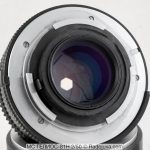
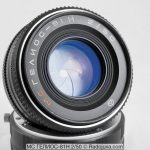
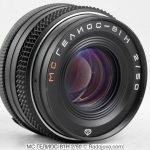
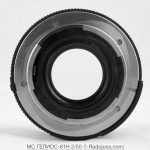
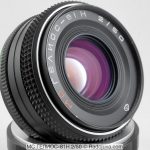
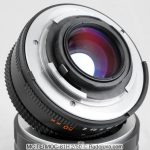
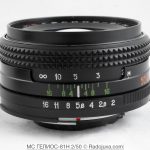
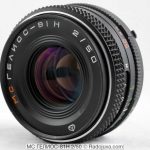
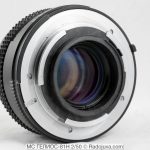
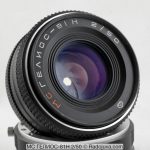
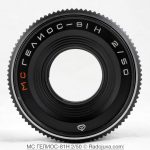
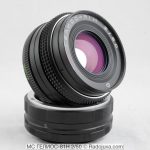
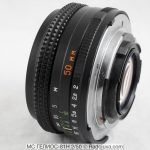
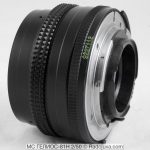
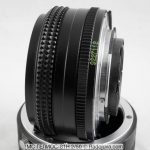
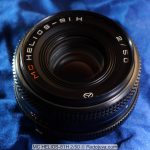
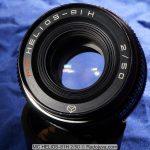
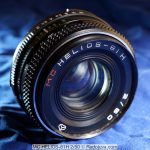
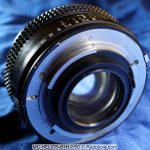
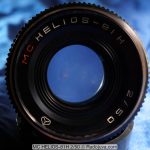
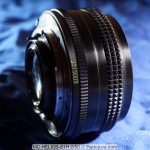
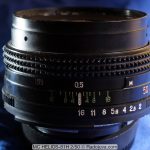
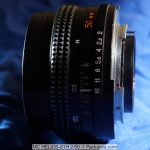
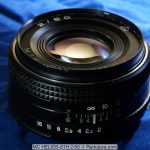
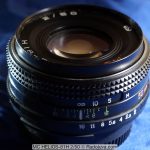
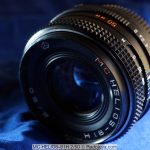
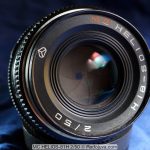
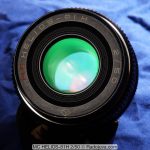
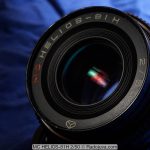
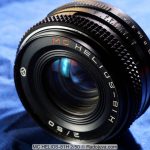
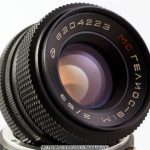
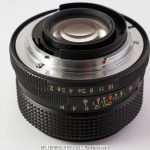
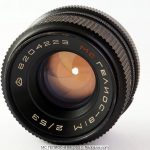
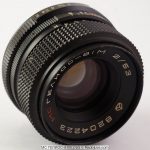
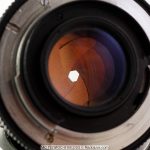
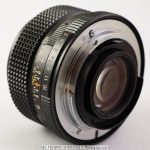
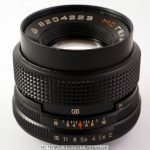
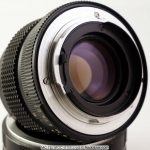
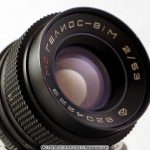
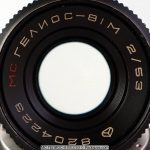
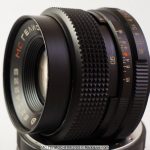
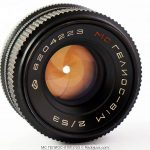
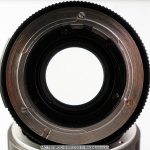
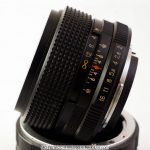
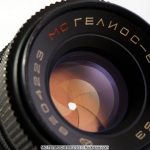
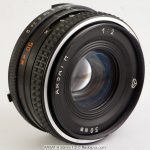
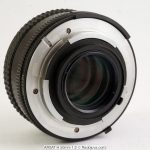
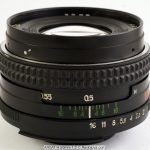
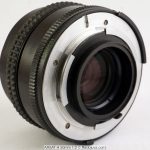
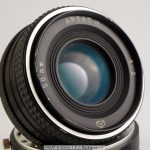
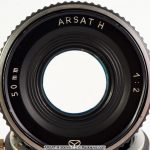
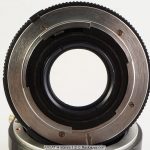
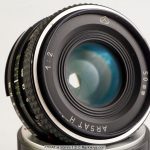
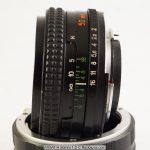
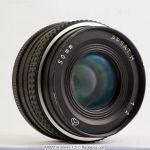
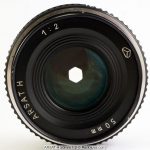
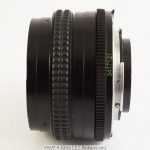
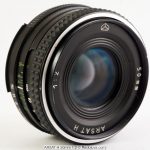
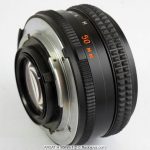
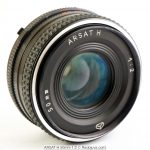
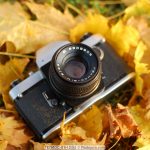
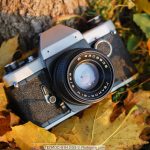
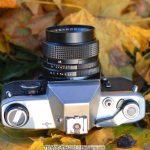
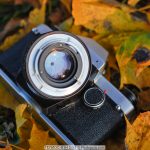
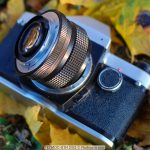
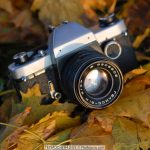
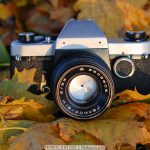
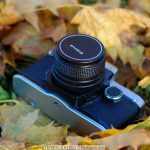
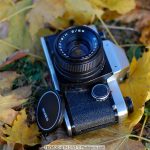
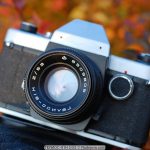
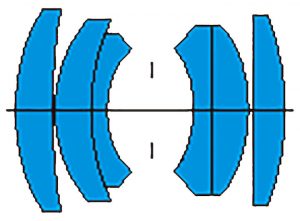
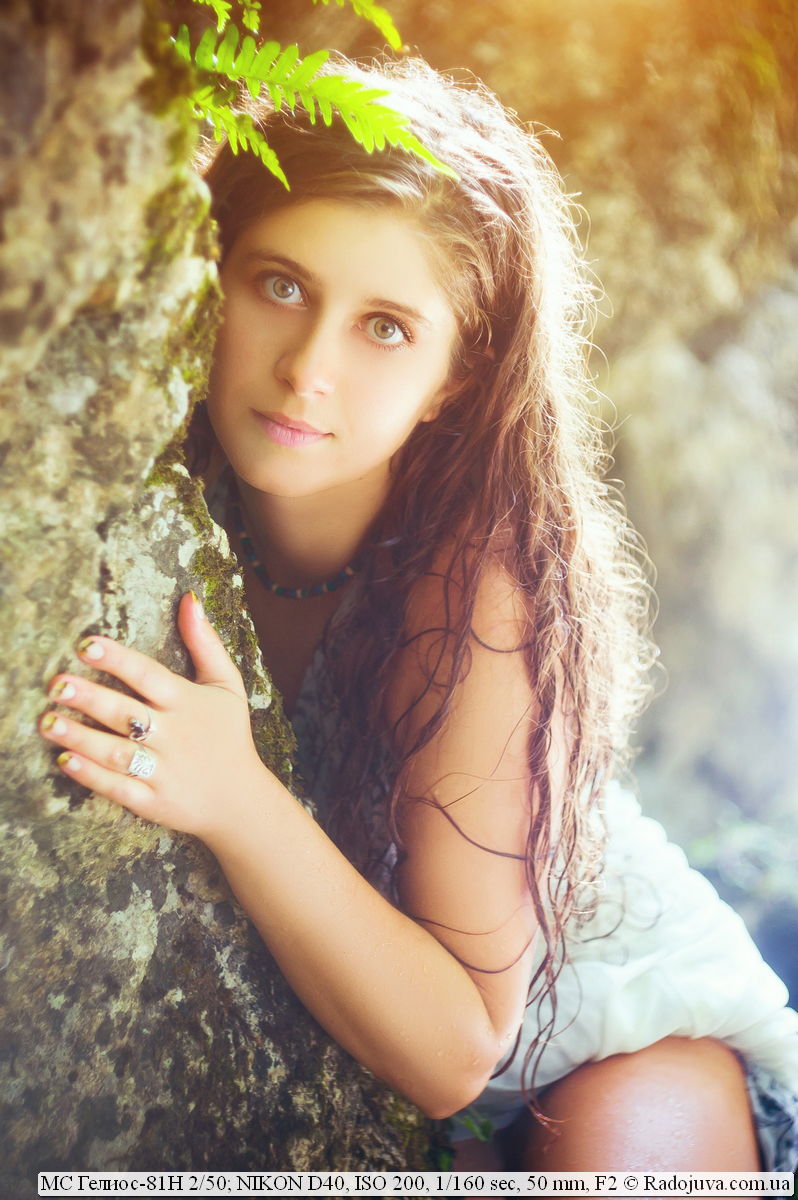
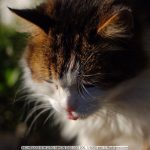






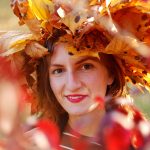
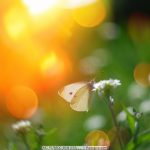
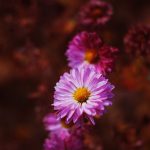
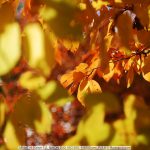
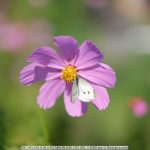
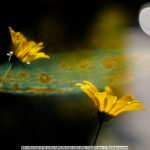
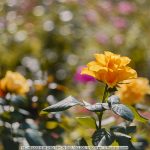

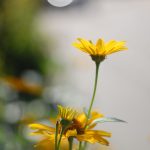


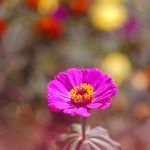
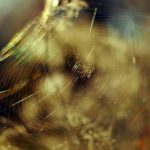
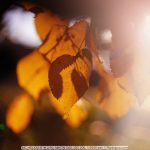

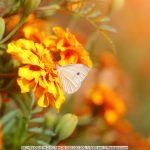

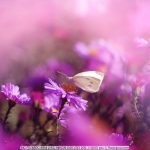

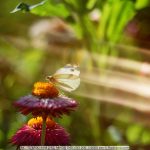



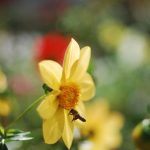








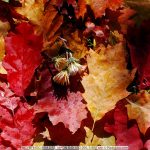


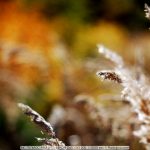






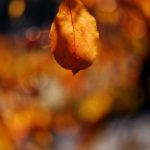
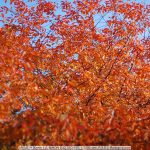
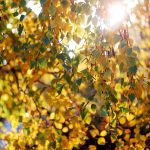
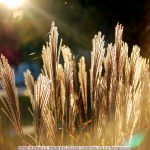


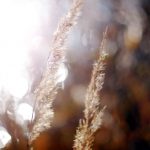
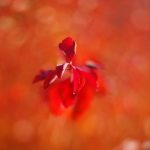


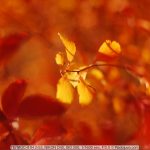
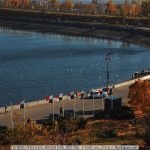






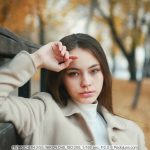

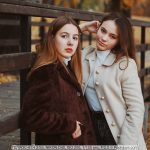

















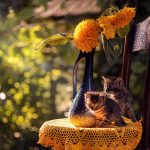



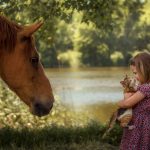


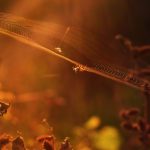
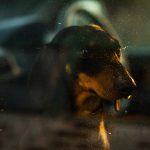





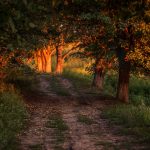




Hello, I plan to buy this lens, what do you think the price is 550 UAH yes is the new gelik normal, or is the price too high?
If used 100% inflated 350 gr. not more. If not used, too little overestimated max. 500g
DEIMOS, I can offer 1,5 times cheaper, if anything, write to the mail ivmulder@yahoo.com
I think that this price is too high.
Hello, a very good article, but I would like to clarify, on Helios 81H, is the thread for the filter not 49 mm?
As I wrote in the review, there are different lens modifications. Basically, the thread of MC HELIOS 81N 2 \ 50 is exactly 52mm, I have two such lenses.
good afternoon, very beautiful photos ... can you ask a question? I have a Zenith TTL camera with a Helios-44M lens, my friend said that this lens is soft focusing, so I can't get what I want. tell me which lens you can take (I'm a fan of photographing for a family album, a child, nature, animals) if I'm lucky, then I'll put it on a DSLR and I would like it to come there too. and one more question, can expired film be used?
Look towards Industar-61. It can be used without any problems on Canon
Good day! It is possible to stitch a vikoristovuvati spit, I myself vikoristovy vkolistovuyu, but it’s a little dignified dignified
Dear Arkady!
Today I got a D90 carcass. The question is stupid but relevant - how to focus on it?
Thank you.
On a D90 camera or on a Helios-81N lens?
On the set ... :)
So far, what I understand is the focusing will be manual, but there will be no autofocus either? Or at least exposure metering? Well, like, how did you set the aperture - and then use the wheel on the carcass to select the shutter speed until the green lamp lights up ... or should you take a test shot by eye and only then give the exposure correction according to the result?
Thank you, Mark (thanks not only for the answer, but also for the titanic work in general)
Auto focus will not. Metering will only be on a portion of Nikon cameras. How to shoot, which cameras support metering, etc. Find in the Soviet lenses section.
Only now did it realize what stupidity I wrote at the beginning of a "bright" thought ... I beg your pardon ...
It's okay :) manual optics is not the easiest thing :)
As I understand it, in order to remove, you need to: 1. Set the desired aperture. 2. Open the diaphragm. 3. Focus. 4. Press the shutter release (the camera itself will return the set aperture in step 1)?
No not like this. Everything happens in exactly the same way as with any other Nikon lens, with the only difference being that the aperture is set on the lens itself, rather than using the camera control levers. Because:
1) set the aperture on the Helios-81N lens
2) selected the desired exposure: shutter speed + ISO + flash power (if necessary)
3) Focused
4) Pressed the shutter button (the camera will close, and then it will open the diaphragm, and everything will become as it was)
Thanks for the answer. And also Arkady, or just knowledgeable people, tell me whether it will be difficult to manually select the exposure and focus (but focusing is almost not scary since I try to shoot on the whale on the manual) on the D3100
No, not difficult.
Good afternoon Arkady.
I got Helios 81n and I want to buy a dandelion for him, tell me what this part will give me if I have 5100 carcasses? or in what modes can I shoot?
In the article I have links to Lushnikov Dandelion, please just read the review about Lushnikov Dandelion, and everything will become clear to you.
Saisibo, I'm not attentive.
I have Arsat 50/2 H, I was with Kiev 18m. right now I put it on d5100, the pictures were pleasantly surprised compared to the whale lens, it was sharper and faster. Right now I put the dandelion to take pictures it became more convenient the quality of the pictures is good. but there are cons the diaphragm wedged already 2-3 times, handed over for repair to the arsenal.
Good afternoon! I have a problem, after the shutter release, the camera closes the aperture to the desired value, but does not open it later, but leaves it in the same position, and when setting a lower value (for example, from 8 to 16) it does not close, you have to remove the lens and set it again. Advise what to do
The diaphragm sticks. Repair the diaphragm mechanism on the lens.
I tried to move the lever on the lens when removing it - it moves (opens / closes) smoothly and without problems, maybe the problem is in poor contact of the camera with this lever? is there any possibility of such an assumption?
Yes, then you need to pull out the lever, since the pusher in the camera may not reach the pusher in the lens.
Super-heavy crowns (SCCs) can actually increase the resolution (RS) of a lens, although not necessarily. Mir-1 - without STK - has a higher RS than its prototype Flectogon with it. But at the same time, STCs sharply enhance internal reflections in the glass and, as a result, the appearance of secondary images in the lens, which become quite bright - especially with a full aperture! - if you put on an uncoated UV filter (for example, a Lytar filter) for protection. Helios-81 is also guilty of this. And this is practically absent in optics without STK, for example, in Helios-44. And Industar-50 has none at all!
Tell me, did it make sense to take this lens on the Nikon D 7000, if there is Nikorovsky 35mm?
There's a meaning.
many thanks)
How is he compared to Helios 44-2 converted to infinity? Are there any fundamental differences in the quality of the resulting photo? I think to take Arsat or not. Thanks.
Which camera? Lenses have different focal lengths, because they are different lenses.
“How is he compared to Helios 44-2 converted to infinity? Are there any fundamental differences in the quality of the resulting photo? " Since the differences in focal lengths (53 mm for Helios-81 and 58 mm for Helios-44 - both lenses are positioned as standard) are not so great, the comparison is quite legitimate. Now, in essence: there will be no fundamental differences in the quality of the resulting photos (I have both). True, Helios-44 is sharper on a full hole.
But what about the terrible stories about the chamfer lenses Valdai G-44-2?
Here we are not talking about the "Valdai", but about my own HELIOS-44 MADE IN USSR (MMZ, M39, 1970), as well as about my own MC HELIOS-81N. As for the white bevels of the lenses of the "Valdai", it is easy to see them even in the photos thereof in your reviews.
Valentine, thanks.
Arkady, such a thing: I tested a couple of G-5000Ns of different series on Nikon D81 (differences in design). The safety of the lenses is excellent. Both at a distance of more than 10m at F5.6 give some absolutely godless vague "mess". Even at F8, the situation hasn't improved much. At a distance of 2-3 meters, everything is fine even at an open aperture. I also noticed a huge difference in the bokeh pattern. To blame everything on Soviet quality? And continue to seek happiness? Or, in principle, this lens is not designed for landscapes and is suitable for half-length portraits?
Please send examples of pictures. At distances from 5m to infinity, you can very much be mistaken in focusing, since every millimeter plays a huge role there. At close distances, focusing is easier.
The man asked specifically about Helios 44-2
Helios-44-2 was first made at MMZ. There it was completely identical to Helios-44 (the same “HELIOS-44 MADE IN USSR” and all the rest, only instead of the M39 - M42 thread). Then it was transferred to Valdai (the distinction: if the G-44 from MMZ had white scales on black frame with a zebra on a Rifden focusing ring, then the “Valdai” - the late one - has multi-colored scales).
Good day. Less supply of food for robots with cym objects. Even if the number of diaphragms is the most optimal, why did the signs of the boule rise and change the background? І in which interchanges the video mode is displayed, Vi, Arkady? Ahead, dyakuyu.
F2.8 gives a very sharp image and still blurs the background well. I usually use shutter speeds from 1 \ 50s to 1 \ 8000 without sparing the camera shutter. Sometimes, I use the slow shutter speed on Helios-81n for night scenes.
Dyakuyu. Yakim b still ob'єktivom W and b could please submit themselves, from manual optics itself, having walked through the process and given the same garnie results and photos ???
From Soviet optics - Kaleinan-5n. From native Nikon: 50mm F1.8 AI
“… From 1 \ 50s to 1 \ 8000 not sparing the camera shutter ..." To be greedy or not to spare the camera shutter is a master's business, but when photographing people - especially a portrait! - they are worth pitying. The point is in the neurophysiology of the chklovek. Even on a calm face, micro-twitching, imperceptible to the eye, occurs with a duration of about 1/1000 s. Poetlmu, if you shoot with shutter speeds shorter than 1/500 s, you can "run into" such a grimace that will not seem like a little.
Valentine, do you really want to say that people should always be shot at shutter speeds shorter than 1 \ 500?
Arkady, it turns out that G-81N is 50/2, and 53/2 is G-81M. Only in this, it turns out and there is a difference, that is, in the letter M and H?
no, they are both 53mm, the difference in the frame of the case.
Old books on photography say that a person’s face changes its expression very often and very quickly, and if you need a reliable portrait, you need to shoot it at long exposures so that several instant facial expressions can be changed, such as how to get a certain average expression faces.
How this is consistent with modern digital cameras, I have no idea.
Good afternoon! Please tell a novice photographer - there is a Panasonic G3 camera and lenses: Helios-81Н 2/53; Jupiter-3 50 mm f / 1.5; Jupiter-11 135 mm f / 4, what adapters do you need to purchase and maybe something else is needed? There is a lot of information on the net, but it is very difficult to decide in the absence of experience. Thanks in advance!
For Helios-81N you need an adapter Nikon mount F - LUMIX G Micro System. Jupiter-3 50 mm f / 1.5 Need an M39-M42 adapter plus another M42-LUMIX G Micro System. Jupiter-11 is different, rangefinder, mirror, under m39 and under a removable tail, it is difficult to tell without an accurate model.
Thank you very much for your answer, I'll try to find it all. And I don’t know how to define Jupiter-11, everything that is indicated on it is Jupiter-11, 4/135 and the serial number, apparently - № 7506032, it is for the Kiev camera.